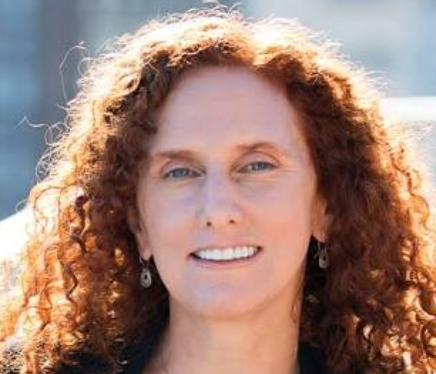TAKE 3 W/ SLP, February 2023
NOTE: Sober Linings Playbook is a personal website. Any views or opinions expressed herein belong solely to the website owner and do not represent those of individuals or organizations the owner may be associated with in a professional or personal capacity, unless explicitly stated.
[Corrected July 25, 2023]
“Take 3 w/SLP” is Sober Linings Playbook’s monthly summary of topics we think deserve a closer look. Take 3 is not necessarily a deep dive, but more of an opportunity for us to bring to your attention some of the emerging themes and issues we’ve noticed while scanning the news each week for stories about addiction and recovery.
On tap this month:
Has the crackdown on opioid prescribing become a pain in the ass?
Is private equity’s expansion into addiction treatment putting revenue before recovery, profits before people?
Stamping out smoking and the stigma of addiction: SLP’s early look at 2023 California legislative proposals.
One. Has the crackdown on opioid prescribing become a pain in the ass?
2023 marks the third year I’ve been compiling weekly news clips on stories related to addiction and recovery. The opioid crisis, obviously, has provided the framework for much of the reporting. The notion that we need to crack down on prescriptions is a common, and almost undisputed, narrative. From the beginning of SLP, however, I have also come across stories that raise questions about whether we’ve gone too far, and whether we are doing more harm than good for patients in pain.
Based on SLP’s casual (an unsystematic) observations, it seems opinion pieces questioning the crackdown on pain meds have become more frequent. I thought I’d use this space to highlight some recent pieces on the issue and include links for anyone interested in reading more.
Are policymakers’ attempts to curb the opioid crisis interfering with doctors’ expertise and ability to practice medicine?
According to Jeffrey Singer and Josh Bloom, the notion that medical use of prescription pain pills caused the opioid crisis is misguided (Bureaucrats are telling your doctor how to treat pain. And patients suffer needlessly, USA Today, Feb. 16, 2023). Instead, they argue what’s really fueling the increase in overdose deaths is drug prohibition and the dangerous black market that results from it. According to Singer and Bloom:
Thanks to pressure from lawmakers, government agencies and policymakers who inserted themselves into the patient-doctor relationship, patients became the victims of the never-ending war on drugs. Policymakers’ exaggerated fear of opioids has pressured hospitals, doctors and dentists to switch to acetaminophen, no matter how severe the patient's pain. Sometimes, the drug is given intravenously in high doses as part of "opioid-sparing protocols.” We believe using the drug in this way is ill-advised, cruel and borders on malpractice.
In a December op ed for the libertarian Cato Institute, Jeffrey Singer applauds Congress for passing the MAT Act which will make it easier for physicians to prescribe buprenorphine to treat addiction (Congress Made it Easier to Treat Addiction but Harder to Treat Pain, Cato Institute, Dec. 23, 2022). He also suggests, however, that the MATE act, which requires 8 hours of training for physicians to receive a DEA license to prescribe pain medications might have unintended consequences. Singer cites the American Medical Association’s opposition to the MATE Act and warns, the Act “may make many health care practitioners not renew or seek a narcotics prescribing license, making it even more difficult for patients in pain to get relief.”
In her recent Huffington Post op ed, Rebecca Stanfel writes of the heightened shame and scrutiny she and her doctor faced in justifying what she describes as her legitimate need for medication to help with the pain of chemotherapy (I Took Oxy And Fentanyl For Years. Here's What No One Is Telling You About The Opioid Crisis., Huffington Post, Jan. 30, 2023). She writes:
I lived in a constant stew of shame for needing these medications, and I feared that I’d lose them and the small life I’d scratched out next to the pain. I raged at how difficult it was…making life a living hell for pain patients isn’t now addressing overdose deaths caused by illicitly manufactured synthetic opioids like Fentanyl.
Some warn the unintended consequences of the crackdown on prescription opioids can be deadly
A recent piece in Vice reported on a double suicide of a husband and wife that was attributed to the U.S. Drug Enforcement Administration suspending the license of their pain specialist doctor (The DEA Shut Down a Pain Doctor. Now 3 People Are Dead., Vice, Jan. 5, 2023). The story reports that dozens of the doctor’s patients became “opioid refugees” with no place to turn to manage their pain and avoid withdrawals.
It is not the fault of people who suffer pain that America has an addiction problem. Denying them access to needed medication helps no one.
— Maia Szalavitz
Similarly, frequent New York Times contributor (and author of books on addiction and drug policy) Maia Szalavitz notes that as new medical guidelines and laws have returned painkiller prescribing to pre-opioid crisis levels, “people who lose access to medical opioids are rarely provided with immediate treatment (whether they are experiencing pain or addiction or both), [and] the result has been more overdose and suicide deaths, not fewer (‘Entire Body is Shaking’: Why Americans With Chronic Pain Are Dying, New York Times, Jan. 3, 2023). Her broader point is that we “continue to fight the last war” by focusing on prescription practices even though the threat has shifted to fentanyl sold on the street.
How to address and manage pain in a post-Purdue world
Szalavitz argues that Congress needs to pass legislation to provide a safe harbor for patients with intractable pain and their doctors. Another avenue for addressing the management of pain is to put more resources into researching and developing new medications. Unfortunately, some argue, not enough of this work is being done.
In a February 2023 piece in the publication Fierce Biotech, author Annalee Armstrong highlights the dearth of innovation and investment in pain medications (Innovation, investment in pain and addiction are not meeting the societal burden, report says, Fierce Biotech, Feb. 2, 2023). The number of clinical trials for pain drugs dropped by almost half from 2017 to 2022, and less than 1 percent of new pain drugs that reach the trial stage are approved compared to 6.5% for new drugs overall. According to Armstrong, “with nearly all experimental pain and addiction drugs failing to make it out of the clinic over the past five years, it’s not hard to see why pharma has been resistant to drug development in this area.”
Two. When it comes to addiction treatment, does private equity put revenue before recovery, profits before people?
SLP has come across several recent stories about private equity investments in addiction treatment programs and facilities. The concern is that the pursuit of profits inherent in the private equity business model may be leading to increased costs for patients and lower quality treatment.
What is private equity and how does it work? Generally speaking, a private equity firm creates an investment fund by raising capital (and commitments of future capital) from a group of institutional investors such as public pension funds, sovereign wealth funds, mutual funds and insurance companies. Strategies vary, but the general purpose is to buy privately held companies, implement changes to make them more profitable, and sell the companies for a profit after holding them for a relatively short period. Critics often point out that making a private equity fund’s portfolio companies more profitable often comes with significant costs borne by workers and consumers.
According to a recent story by Kaiser Health News, private equity investments in health care companies totaled more than $200 billion in 2021 (Sick Profit: Investigating Private Equity’s Stealthy Takeover of Health Care Across Cities and Specialties, Kaiser Health News, Nov. 14, 2022). A Kaiser investigation found that, “as private equity extends its reach into health care, evidence is mounting that the penetration has led to higher prices and diminished quality of care.”
Experts explain that the opioid overdose crisis, coupled with expanded health coverage for mental health and addiction, have made addiction treatment an appealing investment target for private equity firms (Private equity investment is flooding into addiction treatment. Is that a good thing?, Marketplace, Jan. 25, 2023). Addiction researchers and private equity watchdogs warn that practices such as charging high patient fees and not guaranteeing access to evidence-based FDA-approved medications to treat addiction are becoming more common (Private Equity and Addiction Treatment: Some addiction treatment centers turn big profits by scaling back care, CBS, Jan. 30, 2023).
Three. Stamping out smoking and the stigma of addiction: SLP’s early look at 2023 California legislative proposals
SLP tracks California legislative activity related to drug policy and addiction treatment. We provide monthly updates here during the months when the Legislature is active. Because February 17 was this year’s deadline to introduce new bills, SLP took advantage of the long President’s Day Weekend to search for relevant legislative proposals.
The list of 40-plus bills SLP will be tracking in 2023 fall within the following areas:
Expanding availability of overdose-reversing naloxone in schools and other public places;
Increased sentences and fines for fentanyl-related crimes;
Establishment of a fentanyl task force;
Decriminalization of hallucinogenic substances; and
Laws that target gambling and social media addiction.
For the full list, click here.
Two bills are aimed at reducing the stigma of addiction. AB-1130 (Berman-D) would require revising the word “addict” in California laws, and replacing it with the more person-centered, “a person with subtance use disorder.” AB-1339 (Haney-D) would prohibit housing discrimination against people being treated for addiction with medication assisted treatment (MAT) by revising the definition of disability to include a person receiving MAT or taking authorized medications as part of a narcotic treatment program.
Now here’s the big one. Cue the drum roll please. AB-935 (Connolly-D) would implement a New-Zealand style phased tobacco ban by prohibiting anyone born on or after January 1, 2007 from purchasing tobacco products…for life!
I guess I have mixed feelings on this one. On the one hand, raising the legal age for purchasing tobacco (combined with public health campaigns and shifting societal norms) seems to have been effective at reducing smoking rates. If AB 935 passed, the only people able to legally buy cigarettes in the state of California (from retailers not on federal property or tribal lands within the state’s borders) in the year 2107 will be 100 years old or older. It’s certainly interesting to imagine the public health benefits.
On the other hand, it seems absurd to think that an adult smoker could buy alcohol legally (I don’t see that changing any time soon) but have to ask an older friend or family member to purchase their tobacco products.
I’m not going to spend a lot of time worrying about this bill one way or the other. If Big Tobacco weighs in, it probably doesn’t matter what SLP or anyone else thinks about AB 935.
___
That’s all for February. Until next month, stay tuned!


